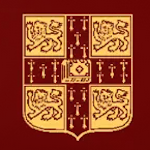Dar-Es-Salaam (“The harbour of peace”), a seaport of East Africa, in 6° 50′ S. 39° 20′ E., capital of German East Africa. Pop. (1909) estimated at 24,000, including some 500 Europeans. The entrance to the harbor, which is perfectly sheltered (hence its name), is through a narrow opening in the palm-covered shore. The harbour is provided with a floating dock, completed in 1902. The town is built on the northern sweep of the harbour and is European in character. The streets are wide and regularly laid out. The public buildings, which are large and handsome, include the government and customs offices on the quay opposite the spot where the mail boats anchor, the governor’s house, state hospital, post office, and the Boma or barracks. Adjoining the governor’s residence are the botanical gardens, where many European plants are tested with a view to acclimatization. There are various churches, and government and mission schools. In the town are the head offices of the Deutsch-Ostafrikanische Gesellschaft, the largest trading company in German East Africa. The mangrove swamps at the north-west end of the harbour have been drained and partially built over.
Until the German occupation nothing but an insignificant village existed at Dar-es-Salaam. In 1862 Said Majid, sultan of Zanzibar, decided to build a town on the shores of the bay, and began the erection of a palace, which was never finished, and of which but scanty ruins remain. In 1871 Said Majid died, and his scheme was abandoned. In 1876 Mr (afterwards Sir) William McKinnon began the construction of a road from Dar-es-Salaam to Victoria Nyanza, intending to make of Dar-es-Salaam an important seaport. This project however failed. In 1887 Dr Carl Peters occupied the bay in the name of the German East Africa Company. Fighting with the Arabs followed, and in 1889 the company handed over their settlement to the German imperial government. In 1891 the town was made the administrative capital of the colony. It is the starting point of a railway to Mrogoro, and is connected by overland telegraph via Ujiji with South Africa. A submarine cable connects the town with Zanzibar. Dar-es-Salaam was laid out by the Germans on an ambitious scale in the expectation that it would prove an important centre of commerce, but trade developed very slowly. Ivory, rubber and copal are the chief exports. The trade returns are included in those of German East Africa (q.v.).
DARESTE DE LA CHAVANNE, ANTOINE ELISABETH CLÉOPHAS (1820-1882), French historian, was born in Paris on the 28th of October 1820, of an old Lyons family. Educated at the École des Chartes, he became professor in the faculty of letters at Grenoble in 1844, and in 1849 at Lyons, where he remained nearly thirty years. He died on the 6th of August 1882. His works comprise: Histoire de l’administration en France depuis Philippe-Auguste (2 vols., 1848); Histoire des classes agricoles en France depuis saint Louis jusqu’à Louis XVI (2 vols., 1853 and 1858), now quite obsolete; and a Histoire de France (8 vols., 1865-1873), completed by a Histoire de la Restauration (2 vols., 1880), a good summary of the work of Veil-Castel, and by a Histoire du Gouvernement de Juillet, a dry enumeration of dates and facts. Before the publication of Lavisse’s great work, Dareste’s general history of France was the best of its kind; it surpassed in accuracy the work of Henri Martin, especially in the ancient periods, just as Martin’s in its turn was an improvement upon that of Sismondi.
DARESTE DE LA CHAVANNE, RODOLPHE MADELEINE CLÉOPHAS (1824- ), French jurist, was born in Paris on the 25th of December 1824. He studied at the École des Chartes and the École de Droit, and starting early on a legal career he rose to be counsellor to the court of cassation (1877 to 1900). His first publication was an Essai sur François Hotman (1850), completed later by his publication of Hotman’s correspondence in the Revue historique (1876), and he devoted the whole of his leisure to legal history. Of his writings may be mentioned Les Anciennes Lois de l’Islande (1881); Mémoire sur les anciens monuments du droit de la Hongrie (1885), and Études d’histoire du droit (1889). On Greek law he wrote some notable works: Du prêt à la grosse chez les Athéniens (1867); Les Inscriptions hypothécaires en Grèce (1885), La Science du droit en Grèce: Platon, Aristote, Thêophraste (1893), and Étude sur la loi de Gortyne (1885). He collaborated with Théodore Reinach and B. Haussoullier in their Recueil des inscriptions juridiques grecques (1905), and his name is worthily associated with the edition of Philippe de Beaumanoir’s Coutumes de Beauvaisis, published by Salmon (2 vols., 1899, 1900).


